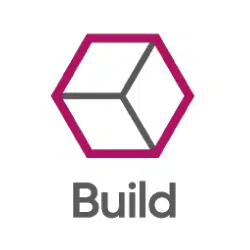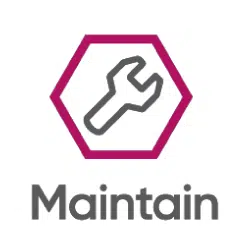When it comes to designing a new dental practice there are several steps to take, and as we’ve discovered, when you work to a set, proven process, it gives a consistent result.
In our experience, every project is different. There are several factors which can affect the project timescales, such as size and complexity. In addition, the third parties involved can have an impact. For example, in a listed building there would be additional approvals to seek and this can add significant additional costs and time delays to the process.
In this article, we’ll address the design process for a squat practice set-up. Just like an implant – a job well planned is a job half done! A well-planned project will be less stressful, happen faster and generally cost less. Time spent planning and agreeing on details BEFORE work starts on-site is a recipe for success. Do not rush to start works on site until all the details are agreed and decided upon.
Phase 1 | The Feasibility Study | £1,000 – £2,000 + VAT
This phase includes:
- an assessment (either on-site or desktop)
- banking budget
- layout plan
The purpose of this is to look at premises from a design and cost perspective and assess their suitability and project viability. The design perspective will include an assessment from the lenses of compliance, practicality, functionality, and a technical building point of view. The size of the unit, drainage presence and location, natural light, shape, access, power, water, DDA compliance, and parking are all factors we take into consideration.
A basic drawing or agent’s plans are essential to help us plan out the space. Banking budgets provide a high-level cost guide for the project. We have a new Squat Practice Cost estimation tool you can use that looks at design, build and fit-out costs and provides an estimate to help put a business case together. Once more details are known, such as agreed layout and building alterations this estimate can be further refined.
Phase 2 | Measured Survey | £1,000 – £2,000 + VAT
This phase includes a site visit and the production of detailed ‘existing’ plans. It is essential that we have accurate plans. If plans are slightly out, it can have disastrous consequences down the line. It is well worth spending the time and relatively low cost up-front to get a professional measured survey* completed and then updating the layout plans to check that what was proposed is still achievable. Once the plans have been produced, we update the layouts to check and usually hold a zoom update call once completed
*Do note that a measured survey is not the same thing as a building survey.
Phase 3 | Building Control & Technical Drawings | £2,000 – £4,000 + VAT
This phase includes a full set of building control drawings and an application submission as well as providing drawings ready for accurate quotes. Until the details, specifications, the scope of works, and all services have been planned and designed, it is impossible to get an accurate quote from any reputable and professional builder. We produce a set of drawings showing all works that can be used for accurate costing purposes and also be submitted to building control. A drawing pack often includes the following drawings but it will vary project by project:
- Electrical drawing
- Drainage
- Floors
- Ceiling plan
- Finishes
A building control officer’s job is to inspect plans and ensure that any works completed are compliant to UK building standards. For a typical squat project, they are especially interested in fire control, fire detection, disabled access, drainage and insulation. The application can be submitted to a local council or a private local inspector. We tend to use a local inspector who we have a good relationship with as they’re more responsive, more understanding and easier to deal with. Once the application has been submitted, it takes 3-4 weeks to receive comments and approvals. The inspector must visit the site several times during the project to ensure the works are being completed as per the drawing. Any costs relating to the site inspection and the plan inspection are in addition and generally are between £1200 – £1800 + vat for each application. Once the project is complete and the final inspection has been made, you will receive a building control certificate. CQC will often request a copy of your building control certificate, so this is very important! During complex projects, there can be additional approvals needed, for example from landlords, listed building consent and planning. As every project is different it is important to consult a specialist to seek advice early on. Sometimes these approvals are unforeseen in the early stages.
Phase 4 | Interior Design & Finishes | £3,000 – £5,000 + VAT
This phase includes a 3D model built of the practice with advice on finishes, flooring, feature walls, lighting and graphics. The output is a set of high-quality visuals produced in professional design software with full-colour render. For those who struggle to picture the finished result from a 2D drawing, this will prove very enlightening as it allows you to see how the practice will look and feel in 3D. Practice owners can put their own stamp and influence on the finishes. An interior designer has a wide range of finishes, fixtures and furnishings available to them and can provide advice and suggestions. There is a remarkable difference in the finished result between practices which are designed by a professional and those which are made up as they go along! Simple design features like lighting, feature walls and graphics are comparatively low-cost but can give the practice the ‘wow’ edge and set it apart from the competition. Once the design has been revised to reflect the client’s needs, a schedule of the chosen finishes can be issued.
Phase 5 | Construction Information, Bespoke Joinery, Technical Plans, Dental Services | £2,500 – £4,500 + VAT
In any large project, there is often an element of detail and having this carefully considered by a professional is essential for project success. In this phase, we complete dental services drawings, including suction pipework, compressed air lines, x-ray wiring and any other services needed for the dental equipment to function. Different makes and models of equipment have different requirements so it’s imperative this is carefully considered on a case-by-case basis and it’s not generic.
Bespoke joinery usually includes items like reception desk design and any joinery features, such as cladding. Drawings will be produced for fabrication purposes and to allow the minute details to be discussed. For example, knowing where sockets and network points will be located on a reception desk.
An electrical drawing will be issued showing all electrical, power, lighting, data sockets and locations throughout the practice.
The output from this phase is primarily for the use of the contractor(s) undertaking the project, but the importance of this phase should be understated. The drawings also provide an important interpretation of the interior design and allow you as the user to have influence and input into the finer details, for example, socket locations, lighting positions etc.
Radiation protection is considered within this stage, providing a drawing for comment and assessment by the radiation protection advisor to ensure the lining meets requirements.
In some instances, CQC or NHS England may wish to see the detailed construction drawing to comment on, especially with the recent focus on ventilation and air handling
With any project, a job well planned is a job half done! Not only will the project more likely stay on budget, as there won’t be ‘surprises’ but work on site will happen faster and smoother. This is because once a detailed design is complete and signed off, there are relatively few decisions, variations and changes that need to be made. Changes and variations are what usually delay a project and increase costs.





